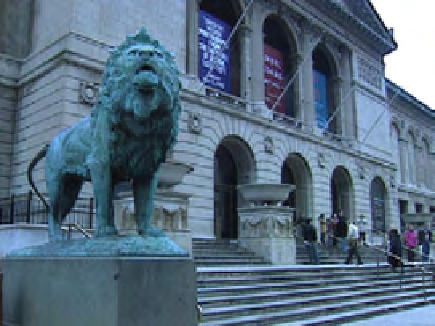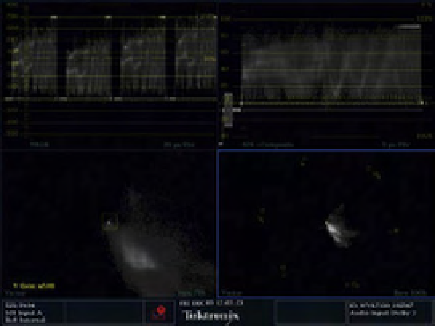Graphics Reference
In-Depth Information
Fig. 9.3
The “cool” shot.
Fig. 9.4
Tektronix WVR7100 screengrab. Upper left: YRGB Parade.
Upper right: composite waveform. Lower right: vectorscope. Lower left:
vectorscope zoomed 5x.
you start out—it's one thing where you finish—but where you start, it's
nice to have as much range between each stage of black, gamma, and
white as you can without any clipping, crushing . . . just get as full a tonal
range as you can. Imagining it's a photograph and trying to see every bit
of the tone from 16 steps of gray that you can or more. Kind of a Zone
System kind of a thing. Whenever I'm doing an image I'm always think-
ing about—not literally the Zone System—but that's pretty much how I
judge an image.”
D e f i n i t i o n
Zone System:
A
photographic concept
espoused heavily by
famous landscape pho-
tographer Ansel Adams.
The system was designed
to be used for the initial
negative exposure right
through the final print. It
is a system designed to
properly expose prints by
envisioning, describing, and
targeting the exposures
of certain tonal “zones.”
There are several topics
on the subject, includ-
ing Adams's original The
Negative: Exposure and
Development (New York
Graphic Society). This is a
great book for learning to
understand tonal ranges
and contrast.
Just adding contrast to an image and just crushing the blacks is not
the same as trying to get tonal separation and get richness.
- Craig Leffel, Optimus
With the base image looking the way he wants (
Figures 9.5
and
9.6
),
he grabs a still to begin working on the match. Very quickly, without
referring to the scopes, Leffel has a pretty close match.
Leffel ignores the fact that the sky in the “cool” image is radically off,
knowing that he'll deal with that later. He switches from the split to cut-
ting back and forth between the still store and the correction. “I have a
blue shift in my shadows if you look at the bottom of that lion. The color
of the building is right, except the contrast is wrong. You can also see the
blue in the shadows in the doorways and in the guy's jacket on the stairs.
However in a case like this of a mis-balanced camera, there's going to be
a trade-off of what compromises you're willing to make in order to make
most
of the image feel good.”




Search WWH ::

Custom Search